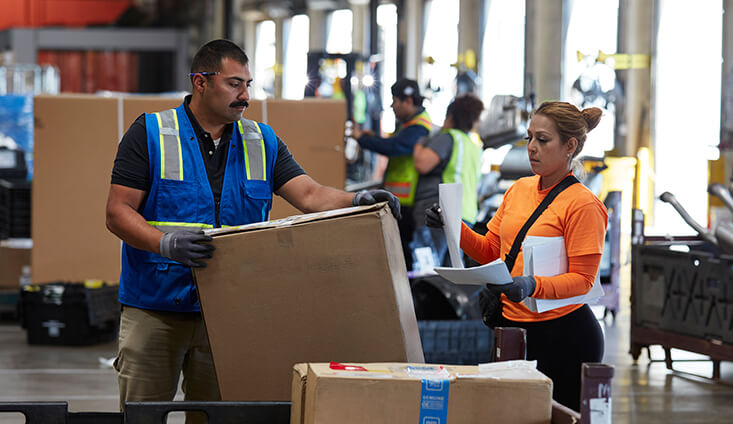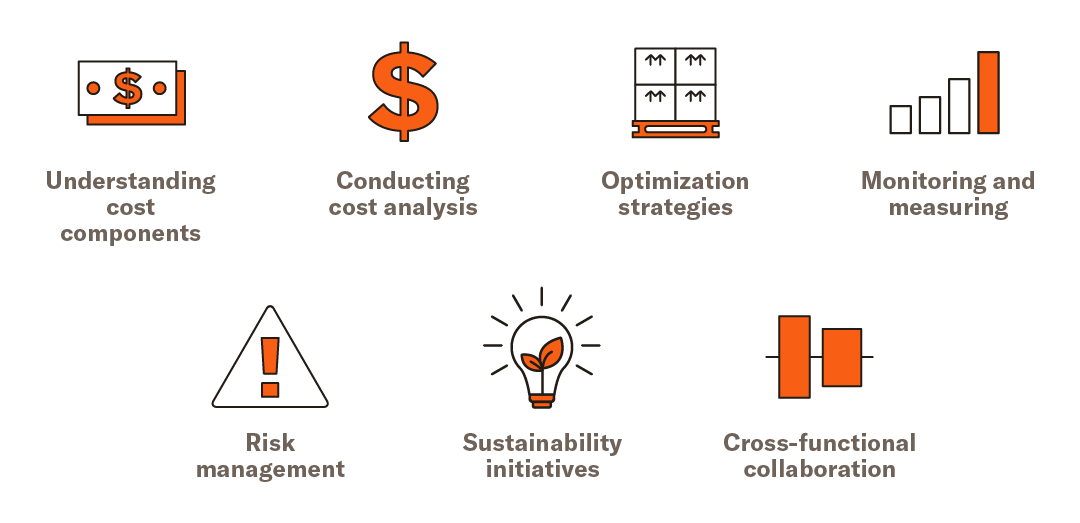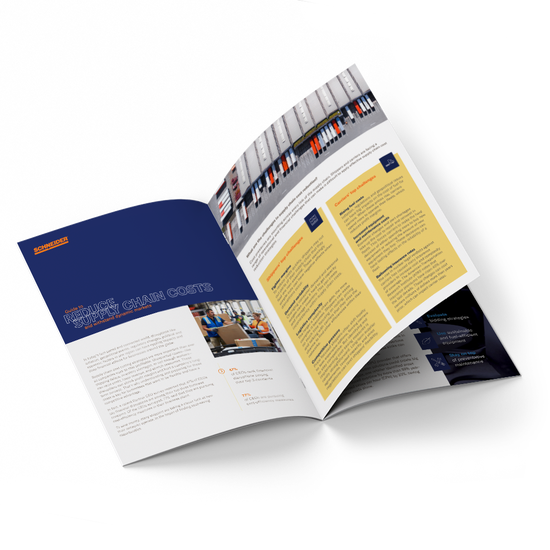Shipper | Blog 3 min. read
Breaking down supply chain costs for agile operations

The cost of keeping goods moving has never been higher. Between 2024 and 2025, supply chain costs surged by up to 7.9%, driven by a perfect storm of global and operational shifts. From disruptions and tightening capacity to rising fuel costs and port congestion, change has become the new normal.
Understanding these costs and how to manage them is necessary for success. To address rising costs, it’s helpful to understand what supply chain costs include, why they’re increasing and what challenges they bring.
What are supply chain costs?
Supply chain costs are the total expenses involved in moving a product from origin to customer. While supply chains vary by industry, most share a core set of components that drive those costs:
- Transportation: Freight charges, fuel surcharges and last-mile delivery costs.
- Warehousing: Rent, utilities and labor for storing goods.
- Inventory: Capital tied up in products, plus carrying costs like insurance and depreciation.
- Administrative: Staff salaries, IT systems and overhead.
- Customs/Tariffs: Duties, taxes and regulatory compliance costs for cross-border trade.
- Procurement: Sourcing expenses, supplier negotiations and purchasing processes.
- Production: Raw materials, manufacturing and quality control.
- Accessorials: Detention, layover, liftgate service, inside delivery or reclassification fees.
- Unexpected expenses: Expedited shipping fees, losses from overstock or returns processing.

Why are supply chain costs rising?
In today’s freight landscape, cost pressures are mounting from every direction. Rising tolls, changing fuel prices and surging truck fleet insurance rates are just the beginning. Operation expenses, including driver wages, equipment maintenance and regulatory compliance, are also increasing.
But it’s not just dollars and cents. These increases reflect a deeper shift in the supply chain environment. Uncertainty, labor challenges and price increases are increasingly overlapping.
In other words, supply chain cost drivers aren’t isolated. They’re systemic, and they’re coming from all sides.
The challenges of high supply chain costs
For shippers, high costs create both operational and strategic challenges:
- Tighter margins: Profitability suffers when expenses outpace revenue growth.
- Reduced flexibility: There’s less room in the budget for innovation.
- Competitive pressure: Price-sensitive customers may turn to lower-cost competitors.
Reducing these costs isn’t an easy task. Capacity shortages and regulatory requirements can limit a shipper’s ability to make quick changes.
Breaking down supply chain cost management
To manage supply chain costs, you need to see and control what’s driving them. An effective approach to managing prices includes these processes:
Understanding cost components: Knowing exactly where and how money is spent.
Conducting cost analysis: Using data to identify inefficiencies and trends.
Optimization strategies: Streamlining routes, consolidating shipments and automating processes.
Monitoring and measuring: Use a supply chain cost model to track results over time.
Risk management: Preparing for disruptions that can spike costs unexpectedly.
Sustainability initiatives: Reduce waste and energy usage, which can lower costs long-term.
Cross-functional collaboration: Aligning logistics, procurement and finance teams on cost goals.

Strategies for supply chain cost optimization
Optimizing your supply chain can save money and help you stay competitive. Try these tactics to help improve your supply chain’s performance:
- Mode shifting: Use logistics calculators to see how much you can save with intermodal transportation.
- Consolidate suppliers: Negotiate better rates through high-volume purchases.
- Adopt new technology: Use Transportation Management System (TMS) and Warehouse Management Systems (WMS) to automate processes and optimize routing and inventory.
These strategies are only starting points. Successful shippers regularly review and adapt their strategies to meet evolving market conditions.
Take action to reduce supply chain costs
Supply chain costs aren’t going to decrease anytime soon. But with clear cost insights and a focus on optimization, shippers can cut risk, boost efficiency and stay ahead.
The first step is visibility. The next is action. The companies that do both will be the ones still thriving — no matter what the market throws at them.

Unlock supply chain savings today
For more strategies to save your budget, check out this free guide to reduce supply chain costs.
Related resources
Drive your business forward
Sign up to receive our industry leading newsletter with case studies and insights you can put to use for your business.












